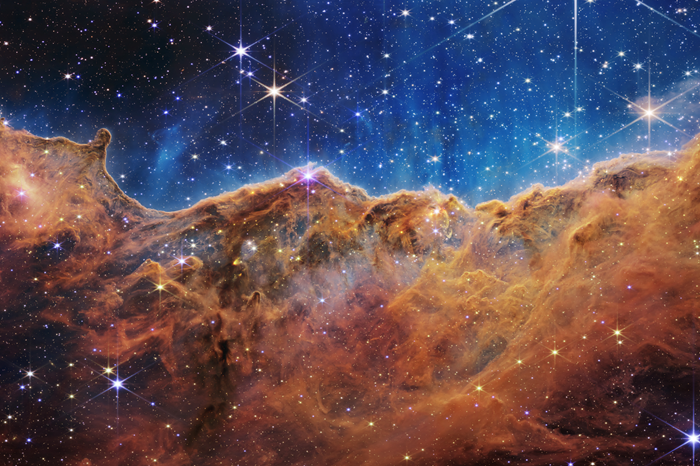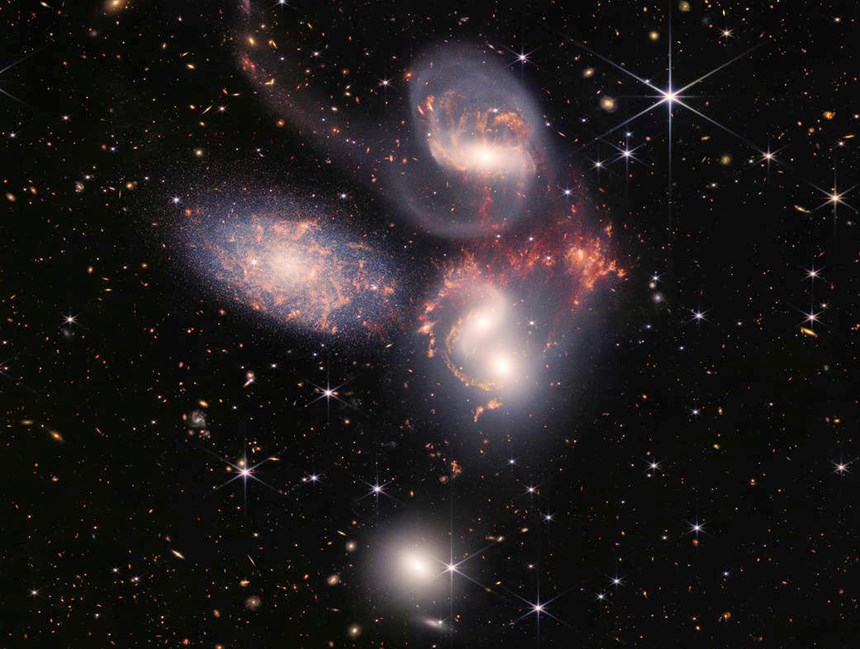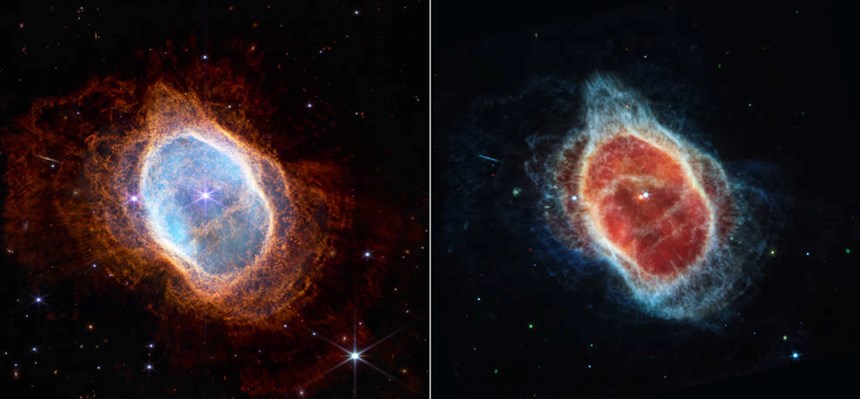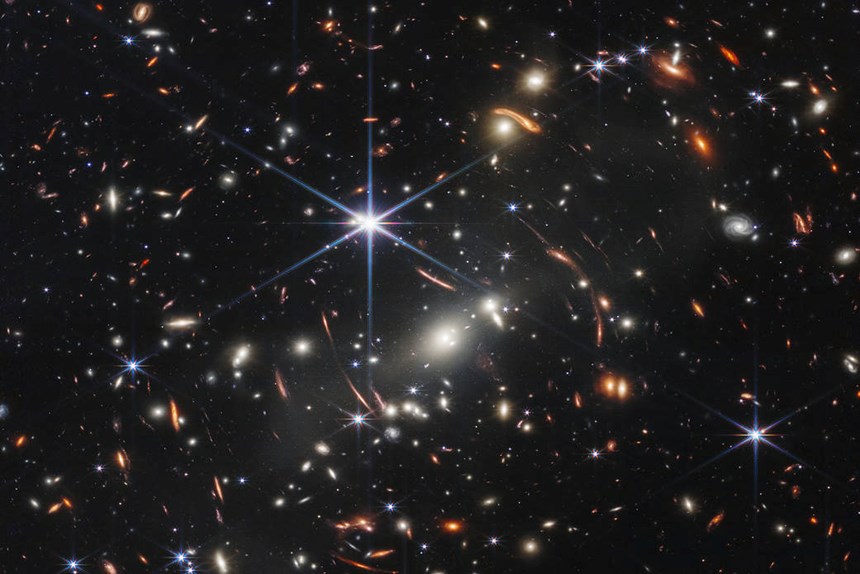NASA reveals James Webb Telescope’s first images of an unseen universe
The world gets its first look at the full capabilities of the composites-intensive James Webb Space Telescope in space through a series of highly detailed images.
FIRST JAMES WEBB TELESCOPE IMAGES
On July 12, the world received its first look at the full capabilities of NASA’s (Washington, D.C., U.S.) James Webb Space Telescope (JWST), a partnership with ESA (European Space Agency) and CSA (Canadian Space Agency). Shown above are some of the telescope’s first full-color images and spectroscopic data, which uncover a collection of cosmic features elusive until now. The full set are available here.
“Today, we present humanity with a groundbreaking new view of the cosmos from the James Webb Space Telescope — a view the world has never seen before,” NASA Administrator Bill Nelson says. “These images, including the deepest infrared view of our universe that has ever been taken, show us how Webb will help to uncover the answers to questions we don’t even yet know to ask; questions that will help us better understand our universe and humanity’s place within it.”
NASA explores the unknown in space for the benefit of all, and Webb’s first observations tell the story of the hidden universe through every phase of cosmic history — from neighboring planets outside our solar system, known as exoplanets, to the most distant observable galaxies in the early universe.
“This is a singular and historic moment,” Thomas Zurbuchen, associate administrator for NASA’s Science Mission Directorate, adds. “It took decades of drive and perseverance to get us here, and I am immensely proud of the Webb team. These first images show us how much we can accomplish when we come together behind a shared goal, to solve the cosmic mysteries that connect us all. It’s a stunning glimpse of the insights yet to come.”
Webb’s first observations were selected by a group of representatives from NASA, ESA, CSA and the Space Telescope Science Institute (Baltimore, Md., U.S.). They reveal the capabilities of all four of Webb’s state-of-the-art scientific instruments:
- SMACS 0723: Webb has reportedly delivered the deepest and sharpest infrared image of the distant universe so far — and in only 12.5 hours. For a person standing on Earth looking up, the field of view for this new image, a color composite of multiple exposures each about two hours long, is approximately the size of a grain of sand held at arm’s length. This deep field uses a lensing galaxy cluster to find some of the most distant galaxies ever detected, according to NASA. This image only scratches the surface of Webb’s capabilities.
- WASP-96b (spectrum): Webb’s detailed observation of this hot, puffy planet outside our solar system reveals the clear signature of water, along with evidence of haze and clouds that previous studies of this planet did not detect. With Webb’s first detection of water in the atmosphere of an exoplanet, it will now set out to study hundreds of other systems to understand what other planetary atmospheres are made of.
- Southern Ring Nebula: This planetary nebula, an expanding cloud of gas that surrounds a dying star, is approximately 2,000 light years away. Here, Webb’s infrared eyes bring a second dying star into full view for the first time. From birth to death as a planetary nebula, Webb can explore the expelling shells of dust and gas of aging stars that may one day become a new star or planet.
- Stephan’s Quintet: Webb’s view of this compact group of galaxies, located in the constellation Pegasus, pierced through the shroud of dust surrounding the center of one galaxy, to reveal the velocity and composition of the gas near its supermassive black hole. Now, scientists can get a rare look, in detail, at how interacting galaxies are triggering star formation in each other and how the gas in these galaxies is being disturbed.
- Carina Nebula: Webb’s look at the “Cosmic Cliffs” in the Carina Nebula unveils the earliest, rapid phases of star formation that were previously hidden. Looking at this star-forming region in the southern constellation Carina, as well as others like it, Webb can see newly forming stars and study the gas and dust that made them.
The release of Webb’s first images and spectra kicks off the beginning of Webb’s science operations, where astronomers around the world will have their chance to observe anything from objects within our solar system to the early universe using Webb’s four instruments.
The James Webb Space Telescope launched Dec. 25, 2021 on an Ariane 5 rocket from Europe’s Spaceport in French Guiana, South America. After completing a complex deployment sequence in space, Webb underwent months of commissioning where its mirrors were aligned, and its instruments were calibrated to its space environment and prepared for science.
For a full array of Webb’s first images and spectra, including downloadable files, visit this link.
Related Content
Next-generation airship design enabled by modern composites
LTA Research’s proof-of-concept Pathfinder 1 modernizes a fully rigid airship design with a largely carbon fiber composite frame. R&D has already begun on higher volume, more automated manufacturing for the future.
Read MoreComposites manufacturing for general aviation aircraft
General aviation, certified and experimental, has increasingly embraced composites over the decades, a path further driven by leveraged innovation in materials and processes and the evolving AAM market.
Read MorePlant tour: Joby Aviation, Marina, Calif., U.S.
As the advanced air mobility market begins to take shape, market leader Joby Aviation works to industrialize composites manufacturing for its first-generation, composites-intensive, all-electric air taxi.
Read MoreCombining multifunctional thermoplastic composites, additive manufacturing for next-gen airframe structures
The DOMMINIO project combines AFP with 3D printed gyroid cores, embedded SHM sensors and smart materials for induction-driven disassembly of parts at end of life.
Read MoreRead Next
“Structured air” TPS safeguards composite structures
Powered by an 85% air/15% pure polyimide aerogel, Blueshift’s novel material system protects structures during transient thermal events from -200°C to beyond 2400°C for rockets, battery boxes and more.
Read MorePlant tour: Daher Shap’in TechCenter and composites production plant, Saint-Aignan-de-Grandlieu, France
Co-located R&D and production advance OOA thermosets, thermoplastics, welding, recycling and digital technologies for faster processing and certification of lighter, more sustainable composites.
Read MoreAll-recycled, needle-punched nonwoven CFRP slashes carbon footprint of Formula 2 seat
Dallara and Tenowo collaborate to produce a race-ready Formula 2 seat using recycled carbon fiber, reducing CO2 emissions by 97.5% compared to virgin materials.
Read More






























